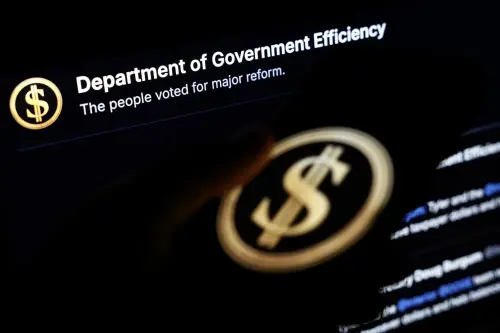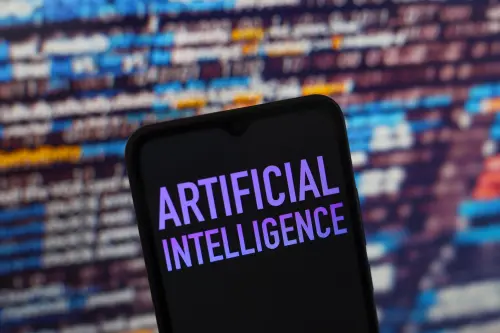Good morning and welcome to the “future.” At approximately 4:29 p.m. Hill Valley time on Oct. 21, Doc Brown and Marty McFly arrive at the present day. For many millennials especially, the 1985 film series Back to the Future represented the far-flung fantastical future that many dreamed would come. But how does the Reagan-era vision of a future where we don’t need roads compare to our daily lives today?
Sadly, you probably came to work today on the same street you may have trodden as a child back in 1985 without a hover board. But our future is still pretty fantastic, and many of the outlandish futuristic devices you saw in the 1989 film Back to the Future II are closer than you think—or already here. Here are three predictions that the film made that today might actually turn the head of an ‘80s time traveler
Drone proliferation
When Doc Brown and Marty McFly arrived in 2015, the sky was filled with more flying cars than the drones that sometimes dot our skies, but the film did point to some potential uses for unmanned remote flying devices. In the future, the film envisioned drones for walking the dog and even remote photography drones reporting on the day’s news. While drones today don’t exactly fill these roles, that future is perhaps closer than you think.
“Private actors will soon operate drones in equal if not greater numbers than the government,” Brookings Fellow Wells Bennett wrote in a report on civilian use of drones last year. Amazon has tested drones to aid in home and business delivery. CNN has been given clearance by the government to explore the use of drones for reporting. Even law enforcement and public safety officials have used drones to aid in policing and fighting fires.
The widespread use of drones in daily life is probably still part of our future rather than our present in 2015, but regulations for this future are being written today. Federal regulators just this week announced that recreational drones will need to be registered. Last year as part of our project on civilian robotics, Gregory McNeal offered his own suggestions for federal and state regulators on how best to tackle civilian drone regulations.
Cybernetic humans and wearable technology
In the 1989 film, Marty faces off against his son’s cybernetic bully, Griff Tannen. The bullies of the present don’t exactly resemble Griff or Locutus of Borg, but cybernetics is closer than you think—even resting in your palm right now.
Taking a walk through Hill Valley in the real 2015, a time traveler might see several pedestrians immersed in their smartphones or glancing at notifications on their wearable devices. In our homes, virtual reality is becoming more prominent as well. Systems like Oculus and Google Cardboard resemble very closely the remote television visors worn by Marty’s kids in the future.
“The proverbial visitor from Mars might conclude that [cell phones] were an important feature of human anatomy,” Chief Justice John Roberts wrote in a 2014 opinion referencing the cybernetic future we are living today. Benjamin Wittes and Jane Chong acknowledge in their report on the emerging cyborg future that the connection we have with technology is becoming more personal. While surveillance laws of the past might make distinctions between human tissue and the devices we use in our daily lives, Wittes and Chong argue that perhaps the separation between the human being and technology in some cases is no longer there—and the law should adapt to acknowledge this.
Flying cars and the transportation of the future
The most-often panned prediction of the film is admittedly the most disappointing—there are no flying cars in our future. This has been a fantasy for even Baby Boomers who were thrilled by the Jetsons’ view of the 21st Century. Flying cars do exist in a limited form, but they are more accurately described as ultra-portable planes that require a pilot’s license to fly. However, the future of transportation is even better than Marty or Doc Brown ever realized; they just needed to travel a few more years in the future to see it happen.
Driverless cars have the potential to be the biggest seismic shift in transportation that many of us will experience in our lifetime. Numerous automotive makers and even Google are preparing for the autonomous future. Imagine your vehicle circling the parking lot to pick you up after a film; traversing rush hour traffic to deliver your daughter to softball practice; even serving as designated driver on Friday night after drinks at the bar.
The future seems like a fantasy, but liability concerns about whom to sue when an automated vehicle gets in a fender bender—or worse—clouds this would-be future.
“While liability will always be important with respect to motor vehicle operation, automation will dramatically increase safety on the highways by reducing both the number and severity of accidents,” writes John Villasenor in his report on how to tackle liability in the driverless era. Despite many reservations about driverless cars, Villasenor argues that current liability law frameworks would be well equipped to address concerns.
Of course, whether the DeLorean Motor Company will come out of mothballs and produce a driverless DeLorean remains to be seen.
Discuss the future’s impact on the modern workforce
At least according to Robert Zemeckis, we’ve arrived in the future. Not that you’re here, join us at 2 p.m. Oct. 26 when we’ll discuss one of the important consequences of all of this technological automation: its impact on the workforce and the availability of social benefits.
The Brookings Institution is committed to quality, independence, and impact.
We are supported by a diverse array of funders. In line with our values and policies, each Brookings publication represents the sole views of its author(s).




Commentary
Welcome to the future: Three things Back to the Future got right
October 21, 2015